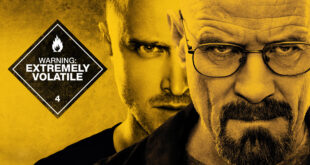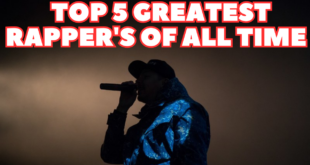WARNING: The following article includes spoilers for Gretel & Hansel, in theaters now.
The fractured fairy tale Gretel & Hansel resembles the classic story by the Brothers Grimm in many ways. Yet the film also includes several key differences that provide some unique food for thought. In director Osgood Perkins’ hands, the story emphasizes the horrific elements of the original tale, while also delving into themes of loss and letting go.
In an interview, Perkins spoke to CBR about the ideas and messages that are baked into the film, his inspirations and the secret hidden in the movie he just might share if enough people are interested.
CBR: There seems to be a theme throughout the film of women letting go — sometimes violently — of their obligations to others. We see Hansel and Gretel’s mother do it, we see the witch, Holda, do it and then finally we see Gretel do it. Can you speak to that theme?
Osgood Perkins: You know, it’s something that occurs to me every once in a while how humans have… two opposing drives. One is to connect and to attach and to develop families and permanent relationships and permanent dwellings and things that suggest permanence. And then there’s an aspect to… the human spirit or to the human animal that is essentially exploratory or evolutionary. We’re always looking to build, discover, invent, realize, uncover. And I think that those two qualities are not necessarily mutually exclusive, but I think that it is certainly harder to evolve as an individual when you attach yourself to a group or to a family or to another person… It becomes a different thing. So… I think it’s important to see that.
You know, I don’t have any answers… I’m not here to prescribe what someone should or shouldn’t do. But I think it’s an interesting thing about people that we tend to do that. We tend to latch on and attach, and then get this thing of like, “Oh, but there’s all this other stuff that I kind of wanted to explore, but I also want to be attached.” …That sort of push and pull…, I think, [has] really lived in all of us, especially adults. It’s less of a kids’ thing, but kids’ movies have to have a little bit of adult in them all the time.
So was there a specific message you were trying to convey through the movie?
I try not to get pedantic like that, but I think that it’s valid to say that on your way towards self-realization, things will have to be lost. Things will have to be shorn away… to fully realize that. And that becomes the ultimate elemental truth of all human existence: at the end, you go alone. So in the end, the task is to go alone. No matter how many attachments you’ve made, or how deeply connected you are to the world, at the end, you go alone. And so that’s… coming for all of us, and so to practice it in some way seems important. And so maybe the message of this is every once in a while, practice your unattachment.
Were there other themes in the film that you felt were important?
Being wary of gifts. Being wary of being given things, being wary of being bestowed stuff. And that probably comes from my own personal experience with… being, I don’t want to say entitled, but how about fortunate. I think that that can be limiting. Obviously, when you have everything, it’s hard to want anything and it’s hard to be driven towards things. It’s not until you lose that you really start to grapple with meaning and with what’s important and everything becomes heightened in its reality. So maybe a thematic there is about there’s definitely pitfalls to being given a lot…. You grow more from losing than you do from getting.
I wanted to talk a little about the production design, especially Holda’s house. She has a really interesting house. Obviously, it is not a candy or gingerbread house, but the architecture is really fascinating. What was the inspiration for the design of that?
It really just came from wanting to have our world [of Gretel & Hansel] be entirely our world… A lot of times people say, “Oh, it’s not set in any time or any place,” and I think that fairy tales, especially, one of their charms is that they are completely self-contained and self-sufficient in a way. They don’t rely on external historical context. Like “Little Red Riding Hood,” it doesn’t matter who the f*cking king is. It’s irrelevant…, the world situation has no meaning. It’s very much about: this is what life can be like, and here’s a lesson about how to make it, how to survive, almost.
And so the idea that our world was only our world, and not connected to any other world gave all the departments — the art departments and the sets and the costumes — that gave everybody a freedom…. We want it to be not today, obviously, not contemporary and not futuristic, although some of it, the design is borderline science fiction. I think that we want to sort of say, “This is no time, this is the time of this, this is Gretel & Hansel time, this is no time that you know about, and so, therefore, stop thinking about some other time or some context and just be in this experience.” And so things like giving the witch a really modern house was… a clue to that. And my hope is that it puts the viewer in the place of, “Where am I? Oh, I’m just here.” That’s the goal anyway.
The film is really atmospheric, it casts a spell, it’s suspenseful. You are the son of Anthony Perkins, who, obviously, will always be known for starring in director Alfred Hitchcock’s Psycho. So I was wondering, were you at all inspired by Hitchcock’s work for Gretel & Hansel?
Not specifically. I mean I think that… something that Hitchcock had that a lot of great film directors, storytellers and artists in general have is there’s an element of sly humor that’s not [that obvious], but if you’re awake to it, it’s all over the place. There’s an element of… just a little bit of a wink and a smirk to everything so that you don’t become ever precious or overly serious or proud of yourself. I think that subtle humor is the surest indication of intelligence and sophistication and artfulness. And so there’s a lot of cheekiness in this movie, which… if anything is Hitchcockian in this movie, it’s cheekiness.
Do you have other inspirations that you draw on as a director?
Yeah, we all have our favorite people, and we all have our favorite looks and things, but I feel like what tends to happen is when I start working on something I try to zero in on the one thing that I don’t ever want to change. And at some point, the film director’s job and screenwriter’s job, certainly, is to make decisions. It’s like, is it going to be the blue raincoat or the green raincoat?… It’s like [the 1998 movie] Sliding Doors; is she going to get on the train or is she not going to get on the train? It has to be really, in essence, one or the other unless your movie’s about all the choices…. But if you’re making choices, that’s the job.
So really what happens for me is when I’m designing something, I’m starting to kind of build something out,… one thing… becomes important and immovable. It’s like a crossword puzzle. Like, once you have 17 across then you start to be able to say, “Well, now I have some idea of what 12 down is.” So… for instance, once you lay in, “this is no time, we are not in any time, we are not in any country,” you can start laying in other realities about that.
So, as opposed to having directors who are influences for me, what tends to happen is I’ll latch onto a figure or a shape or a painting or a photograph or a sound or something that becomes immovable. And in the case of this movie it was the triangle, the triangle became sort of like the immovable shape. And around that we were able to find so many things. And so the movie’s littered with triangles all over the place. I don’t even necessarily know what it means — although I think I secretly do. But the inspiration becomes internal. As opposed to [looking to] something external… you make your own inspiration internally.
So what does the triangle secretly mean?
I can’t tell you that!
I’m so curious now!
I would never tell you that! Let’s see if the movie does well, then someone will actually care to know.
Gretel & Hansel stars Sophia Lillis, Alice Krige, Jessica De Gouw, Charles Babalola and Sammy Leakey. The film is in theaters now.
 Epic Heroes Entertainment Movies Toys TV Video Games News Art Pop culture news goodness
Epic Heroes Entertainment Movies Toys TV Video Games News Art Pop culture news goodness


